Do you want to adopt a healthy(-er) lifestyle, eat better, and feel better, but you are confused and overwhelmed by all the information out there, some even contradictory? That was me a few years ago before I started the plant paradox program in August 2017, so I totally get it.
I was in my late 30s, and although I was relatively healthy before that (or so I thought), the past few years, I started to have all sorts of problems I was puzzled about: gaining weight and looking puffy despite eating ‘well’ and exercising, having daily acid reflux to the point I couldn’t fall asleep laying down, having terrible PMS symptoms and cramps, and more. So what was I doing wrong?
My story in a nutshell. Why I started the plant paradox program
I used to wake up early and practice yoga, and by noon I needed to take a nap. I had inexplicable acne on my arms that wouldn’t go away no matter what I did, dry skin and falling hair, a stiff body, excruciatingly painful periods and PMS, and terrible sinus pressure headaches.
I had been suffering from acid reflux all my life, and it was getting worse every day. As you might imagine, especially if you are a woman, these were considered rather “normal symptoms” for a woman “approaching her 40s”. I just couldn’t live with the thought that my health was declining from now on. So I started to look for answers.
One day this article from Goop.com came up on my Facebook feed: Are we wrong about what makes food healthy? It was an interview with Dr. Steven Gundry. After reading this, I had an epiphany. It was the first time I ever heard the word “lectins”. What I thought was healthy food might not have been that good for me.
How was my lifestyle before going lectin-free?
Just to give you some examples, for breakfast, I usually had organic oats with non-dairy milk, goji berries, and maybe some banana slices. Healthy, right?
Or, I had a slice of whole wheat/seeds bread with peanut butter (the clean one, no sugar or other oils added) with some banana slices on top or some berries.
For lunch, I usually had a platter with some green salad, tomatoes, cucumbers, bell peppers, maybe some good quality feta cheese or mozzarella, hummus, olives, extra virgin olive oil, and maybe a slice of whole wheat bread.
We would go out often for dinner, but my choices were still on the healthy side. I would not eat the bun from a burger, get sweet potato fries instead of normal potatoes and only have a few, always have a salad or veggies, and always share a portion with my husband, so we were not overeating.
I made healthy choices when grocery shopping, always buying grass-fed meat and wild-caught fish and pastured chicken (step 4 at Whole Foods) and pastured eggs.
And I rarely drank some ginger ale, but no other soft drinks, and only had fast food once a month or so.
I didn’t recognize myself anymore
Despite all this, I had to buy a new pair of jeans every couple of months, because the old ones wouldn’t fit anymore. Dresses and jackets wouldn’t fit me anymore either. And I didn’t recognize myself in the mirror (It was for the first time in my life having serious weight issues).
I did not want to weigh myself because I was scared of what I would see. But one day, I did it, and I was horrified. I was about 22 lbs over what I considered my normal weight (If you think that’s not much, consider I have a petite frame and that the 22 lbs were all fat and water). At this point, I weighed the heaviest I ever had, and at that moment, something clicked. I had to do something about it. So I started to be open and search for answers. That’s when I found the article I mentioned.

It’s all about making up your mind
And little parentheses here: getting healthy is in our power, and we all have the tools to make all the below changes, but if we have not made up our mind, it’s not going to happen (like with everything in life that requires major change and action). Someone once told me: “You won’t make a change until you are fed up with being fed up.” And it was true.
That’s why I put this guide together.
I’ve been following the plant paradox lifestyle since August 2017, and all my above health issues are fixed. I have lost the extra fat and water, added some muscle, improved my metabolism, and have easy periods for the first time.
My body is not stiff anymore, I don’t crush during the day, and sinus pressure headaches are rare. I haven’t taken one single Advil or any other medicine since I started. When my sinuses bother me, some turmeric, ginger, elderberry syrup, or essential oils are enough to handle it.
Beyond the plant paradox
So while The Plant Paradox book offered me all the answers to my health questions, there is so much Dr. Gundry could expand on in one single book. I was curious to find out more, so I started following some of the health gurus I knew were more or less in line with Dr. Gundry’s recommendations.
Most of the steps below are common to many diet theories, but the lectin-free community is still relatively small, although growing every day. I think lectins are the last piece of the puzzle, and trying a lectin-free or a low lectin lifestyle is the last hope and one that delivers for many people living with chronic inflammation.
However, eating lectin-free is not the same as following the plant paradox program. Some things should be eliminated that have nothing to do with lectins, such as omega-6-rich oils and sugar, and these are a crucial piece of the puzzle and essential to the plant paradox program.
The plant paradox is not a diet, it’s a lifestyle
I am so grateful I found my health that I consider my mission to make this information available to as many people as possible and make it easier for them to implement these changes.
That’s why I started the “CreativeInMyKitchen” community and developing recipes that are not only healthy and anti-inflammatory but are delicious and interesting. To make these dietary and lifestyle change sustainable, we need to be able to cook and eat good food.
So I’m trying my best to share my love for cooking and experimenting with healthy food in the hope that it helps you to stay on track every day and committed to this lifestyle in the long term.
Before we start…
We need to understand how we got here and change how we see healing, medicine, and food.
You will see a lot of references to losing weight, but that doesn’t mean only people who carry extra weight have health issues or that you need to lose weight to be healthy.
Weight gain is usually a symptom of chronic inflammation and disease and usually is the first symptom that bothers us and motivates us to change. But, we are all different and ideal, and normal weight is different for all of us.
So while I encourage you to investigate why you are gaining weight (if) or losing too much weight, I also encourage you to seek health, not weight loss. Once you remove all the external factors that cause inflammation and pain, your body will restore its own balance.
It’s not your fault
“It’s important to first understand that any tendency to pack on extra pounds and any difficulty slimming down are not because you are lazy or undisciplined person. If you are carrying around extra baggage, the likely reason is because you are eating the wrong foods, and/or not eating the right foods. […] Disease issues and weight issues are often inextricably linked […].” – The Plant Paradox (pg. 132), Dr. Steven Gundry
You are not who you think you are
“One of our biggest health misconceptions comes from our collective lack of awareness of who we really are. The real you – or the whole you – is actually what you think of as ‘you’, plus those multitudinous microbes. In fact, 90% of all the cells that constitute you are nonhuman. To go a step further, 99 percent of all the genes in you are not human.” – The Plant Paradox (pg. 71-72), Dr. Steven Gundry
You have the power to heal yourself
Most modern chronic diseases are a result of inflammation caused by lifestyle and eating the wrong foods and can be reversed by changing your lifestyle.
“Each one of us has the power, the green life force energy, to heal from within once the external forces that prevent that natural ability are removed.” – The Plant Paradox (pg. 67), Dr. Steven Gundry
You are in it for the long haul
It’s a lifelong commitment. We have to stop thinking that health can be achieved by yo-yo dieting. Short-term dieting will only confuse your body and sooner than later you’ll be back to bad habits and start all over again.
All the book references you find in this article:
- The Plant Paradox, by Dr. Steven Gundry
- Genius Foods, by Max Lugavere
- The Complete Guide to Fasting, by Dr. Jason Fung
- Super Fuel, by Dr. James Dinicolantonio and Dr. Joseph Mercola
- Grain Brain: The Surprising Truth about Wheat, Carbs, and Sugar–Your Brain’s Silent Killers, by David Perlmutter
The plant paradox – 18 steps to improve your health
(1) “Dig yourself out of the Omega-6 hole”
This is one of the most important steps you can take to reduce chronic inflammation and improve your health. Replace industrial seed oils (canola, sunflower, grapeseed, other ‘vegetable’ oils usually marketed as ‘heart healthy’) that are highly inflammatory with healthy oils like extra virgin olive oil, avocado oil, coconut oil, grass-fed ghee, perilla oil. And step no. 5 below (remove all highly processed foods) is essential in balancing out the Omega-3 to Omega-6 ratio.
“Read the labels at the supermarket, and you will find these oils in just about everything, but some of the worst offenders are salad dressings, mayonnaise, margarine, and imitation butters made from plant oils, frosting, crackers, cookies, cakes (almost all baked goods in fact), peanut butter, microwave meals and more.” – Superfuel (pg. 136), by Dr. James Dinicolantonio and Dr. Joseph Mercola
When we moved to the US, for some reason, I started to buy us vegan butter (lured by the promises on the package like ‘heart healthy’) and grapeseed and canola oil for cooking. I thought I knew better, but even I was misled, all the false health information you see in US supermarkets. No wonder my health went downhill from that point until I started the Plant Paradox program.
(2) Remove grains and soy from your diet
And if you think you can’t live without bread, pizza, and pasta, I’m here to tell you there are delicious ways to make and enjoy these foods in moderation, even without the classic ingredients like wheat and corn. And if you must (MUST) keep only one-grain item in your diet, make it sourdough bread (the real one, made with only salt, organic flour, water, and sourdough starter) and make it a treat, not a daily occurrence. That means have it on the weekends to soak up extra virgin olive oil. And when it comes to soy sauce, which everyone uses and loves, there are excellent replacements like Coconut aminos and good quality fermented soy sauces (e.g., Japanese umami).
“Researchers have known for some time now that the cornerstone of all degenerative conditions, including brain disorders, is inflammation. But what they didn’t have documented until now are the instigators of that inflammation—the first missteps that prompt this deadly reaction. And what they are finding is that gluten, and a high-carbohydrate diet for that matter, are among the most prominent stimulators of inflammatory pathways that reach the brain.” – David Perlmutter, Grain Brain: The Surprising Truth about Wheat, Carbs, and Sugar–Your Brain’s Silent Killers
“Grains are often considered healthy because of the small amounts of vitamins and fiber that they contain. But grains in their most commonly consumed form spike blood sugar as effectively as table sugar. This occurs because the starch they contain is simply glucose molecules bound together in chains that begin to come apart as soon as you chew them.” – Genius Foods (pg. 94), Max Lugavere
(3) Cut sugar from your diet
Sugar is a drug and is addictive, and there is no other way to put this one. It’s just a matter of time until it will be widely recognized as so. Most of our modern-day chronic illnesses are due to insulin resistance, which is a consequence of our consumption of sugar and refined carbs. Not even talking about non-alcoholic fatty liver disease or kidney disease.
Refined sugar of any type, corn syrup, agave syrup, even maple syrup, and honey, all have more or less the same impact on your insulin levels and will wreak havoc in your gut and cells. There are plenty of sweeteners generally considered safe, like Inulin, erythritol, and monk fruit, but be careful of how much of those you are using. The sweet taste can be as addictive as anything coming from refined sugar, and if you start having sweet treats every day, even if considered safe, your brain will be super confused and will make you crave more sweet treats which you really don’t want.
Re-educate your palate not to need and crave the sweet taste. And check out the next step, it is related. Dark chocolate with 1g or less of sugar per serving should be fine, so yay!
To your fat cells, elevated insulin often means one thing: “party time!”. This was helpful – lifesaving, even – during more austere times. Today, it’s causing our bodies to stockpile fat in preparation for a famine that never seems to come. “ – Genius Foods (pg. 96), Max Lugavere
It’s the sweetness, not the sugar
“It’s the sweetness, not the sugar. Now there is a problem with artificial or even natural (think stevia) noncaloric sweeteners. Your body can’t distinguish between the sweetness of sugar or other calorie sources and these calorie-free sweeteners. That’s because the molecular structure (pattern) of the calorie-free sweeteners, fits into the sugar-docking port on your taste buds and prompts the same pleasure signal to your brain that real sugar prompts. Then, when the calories from real sugar (glucose) don’t arrive in your bloodstream and are not detected by glucose receptors in your brain, your brain feels cheated. It “knows” you are eating sugar because it “tasted” sugar, but it’s really angry that the sugar didn’t arrive and prompts you to get some more. Back you go, looking for more sweet tastes”. – The Plant Paradox (pg. 109), Dr. Steven Gundry
(4) Treat fruit like candy
Except for avocados, lemon, and limes. This is another hard one to wrap our heads around, but fruits have sugar, and we have not evolved to eat the number of fruits we have access to in our modern diets. You don’t have to remove them completely, have moderate amounts of fruits in season, preferably locally ripened, especially berries.
(5) Eat REAL FOOD / Remove all highly processed food
These are usually made with highly inflammatory oils and lots of sugar, hidden ingredients, and junk (basically almost everything that comes in a package; there are exceptions, though). Read the labels and make sure every ingredient is safe for you.
“Avoiding processed foods full of corn, soybean, and cottonseed oils is a small price to pay for eating delicious foods that are high in healthy fats – and maybe even losing weight in the process. “ – Superfuel (pg. 132), by Dr. James Dinicolantonio and Dr. Joseph Mercola
(6) Reduce animal protein consumption and choose the best quality
Always know how the meat you eat was raised. The thing is, you are not only what you eat, but you are what the thing you eat, ate.
High-quality protein means animals raised the way they were supposed to, outside, on pastures, eating grass. (You want 100% grass-fed meat or grass-fed, grass-finished). Or wild-caught, sustainable fish and shellfish. Protein is essential for our health, but we don’t need as much as we were told we do, and we can take most of it from plants.
Take the palm of your hand, without fingers, as a measuring tool for the portion size. Anything bigger is too much. Have you heard of the word “condimeat“? Make animal protein a condiment for your meals, not the main ingredient. A new movement called “pagan” lifestyle (started by Dr. Mark Hyman) takes the best of both paleo and vegan worlds: making vegetables the core of your diet and using quality meat as a condiment. This is also the main idea behind the plant paradox lifestyle.
(7) Eliminate nightshades and legumes for a while, or prepare appropriately
I know this comes from a former tomato, bell pepper, and cucumber addict, so I know what you must feel when you read this. These are vegetables, aren’t they supposed to be healthy? They surely have some nutrients (and some are actually fruits, not vegetables). Still, they are also extremely rich in anti-nutrients, like lectins, which makes them highly inflammatory for some of us.
If you must have them, make sure they are peeled and de-seeded, that’s where most of the anti-nutrients lurk. As per legumes, they are high in anti-nutrients and difficult to digest. Did you know most food poisoning cases in the world are because of undercooked beans? Try eliminating legumes for a while to help your gut heal and see if it makes a difference in your body. If you can’t live without them, especially if you are a vegetarian, you can reintroduce them later when you feel ready, but make sure you pressure cook them.
I was able to re-introduce both nightshades and legumes/beans, prepared appropriately. Proof some foods don’t have to be eliminated forever is this traditional Romanian recipe made of tomatoes, peppers, and eggplant, which I recreated to lower the lectin content. If you heal your gut, you will be able to eat tomatoes again:
‘Zacusca’ – A Traditional Nightshade Spread Made Lectin-Light
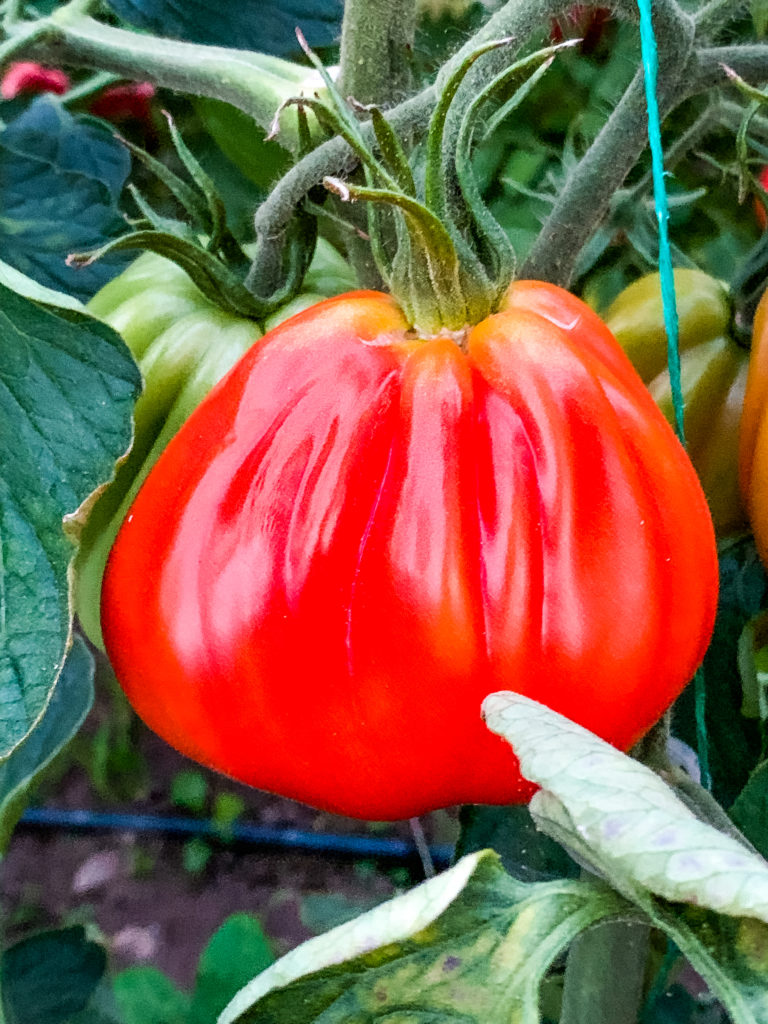
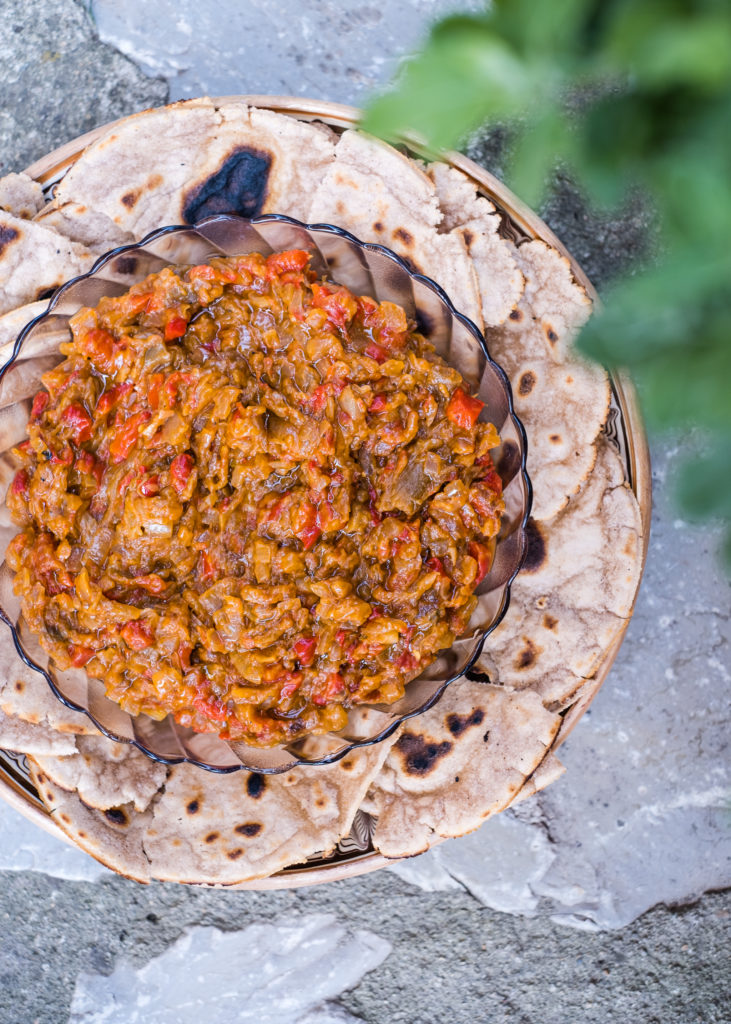

So, what are lectins anyway?
“So, what are lectins anyway? For the most part […] they are large proteins found in plants and animals, and they are a crucial weapon in the arsenal of strategies that plant use to defend themselves in their ongoing battle with animals. […] Like smart bombs, lectins target and attach themselves to sugar molecules […]. They also bind to silica acid, a sugar molecule found in the gut, in the brain, between nerve endings, in joints and in all bodily fluids, including the blood vessel lining of all creatures. Lectins are sometimes referred to as ‘sticky proteins’ because of this binding process, which means they can interrupt messaging between cells or otherwise cause toxic or inflammatory reactions. ” – The Plant Paradox (pg. 14-15), by Dr. Steven Gundry
(8) Know your nuts and seeds
Nuts are great for you, in moderation, but not everything we call a nut is a nut. Peanuts and cashews are not nuts, and they are highly inflammatory. Also, know that almond skins are rich in anti-nutrients (lectins), so make sure your almonds are blanched before you eat them. Sunflower, pumpkin, and chia seeds are also rich in lectins, so go for less inflammatory seeds like hemp, flax, and sesame.
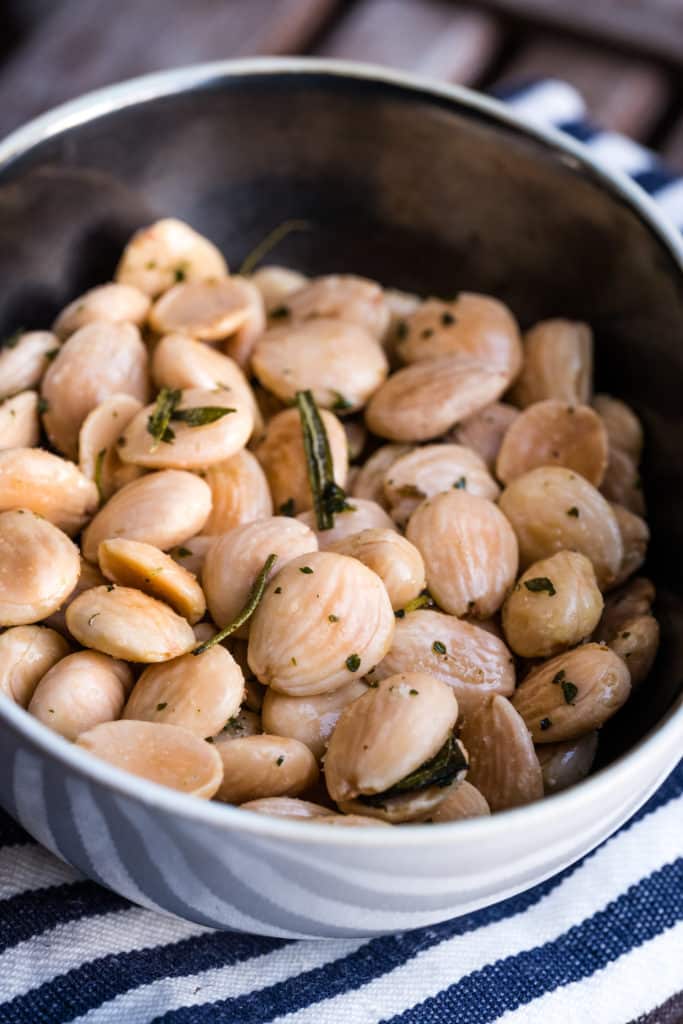

(9) Not all dairy is made equal
Firstly, dairy milk is full of sugar, so don’t bother, no matter where it comes from. Also, it is loaded with insulin-like growth hormone to promote rapid growth and weight gain (in cows offsprings). There are many delicious replacements like hemp, almond, macadamia milk, etc, and you can even make them at home easily. Hemp milk is great non-dairy milk, see this article on how to make it at home.
Also, know that the cow breeds in the world can be split into two categories: those who produce casein A1 milk and those who produce casein A2 milk. Most of the cattle in North America and Northern Europe are casein A1, so you want to avoid those products. Cattle in Southern Europe produce more casein A2. If you want to keep dairy in your diet, go for French, Swiss, Italian, aged cheeses and butter. And keep it low. Ever wonder how come the Swiss eat so much cheese, but they still feature as some of the healthiest people in the world? This might be one of the reasons.
Also, goat and sheep products are safe, but keep them as a condiment, not the main ingredient in your meals. In my case, I eventually figured dairy was not good for me, so I eliminated it, except for rare occasions when I eat small quantities of butter.
Casein A1 and A2 milk
“About a thousand years ago, a spontaneous mutation in Northern European cows cause them to make the protein casein A1 in their milk instead of the normal casein A2. During digestion, casein A1 is turned into a lectin-like protein called beta-casomorphin. This protein attaches to the pancreas’s insulin-producing cells, known as beta cells, which prompt an immune attack on the pancreas […]. The black and white Holstein is the classic example of the A1 cow, while the Guernsey, Brown Swiss, and Belgian Blues are all casein A2.” – The Plant Paradox (pg. 32), by Dr. Steven Gundry
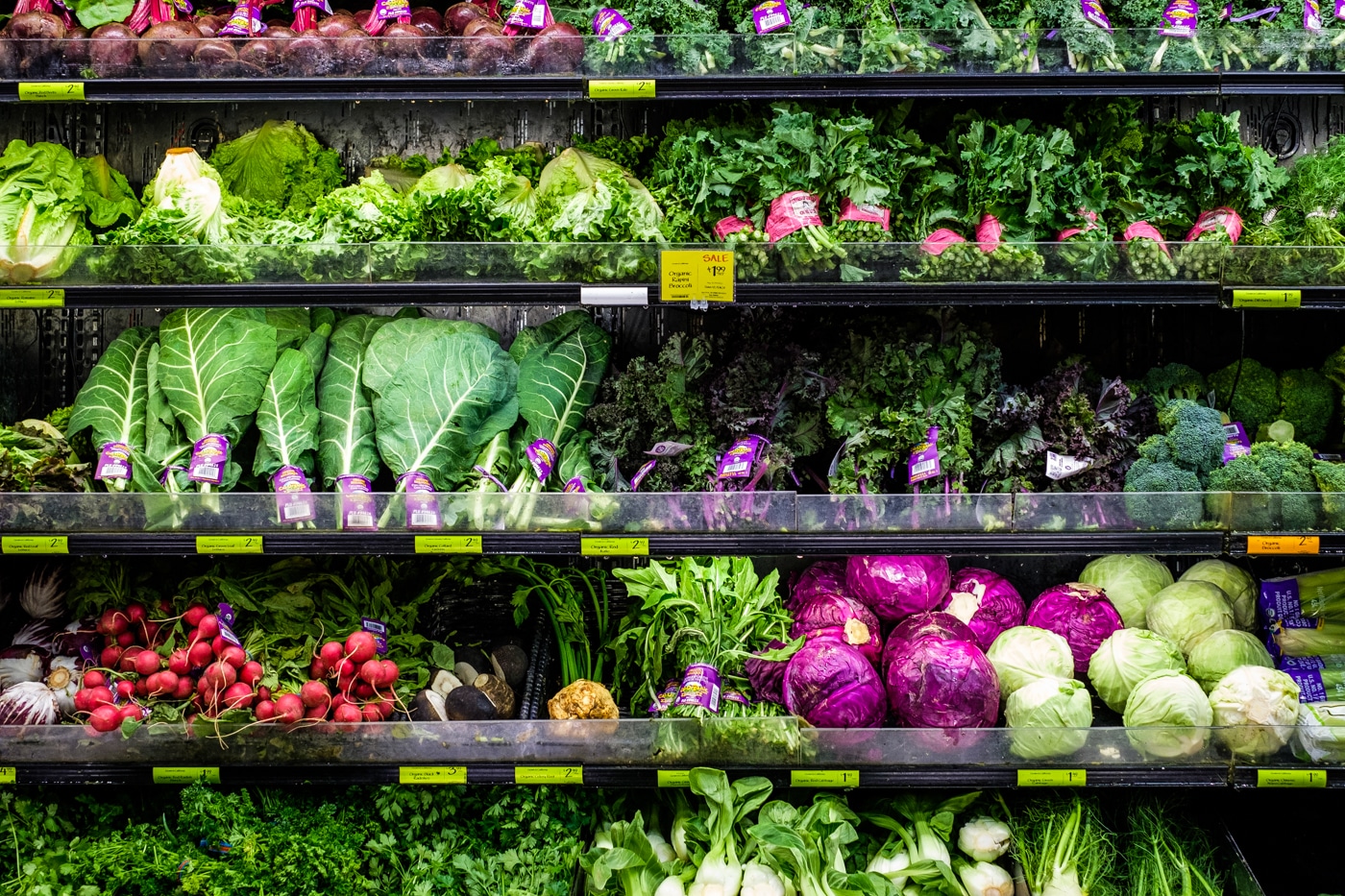
(10) Make vegetables and high-quality fats the core of your diet
After reading, you must eliminate nightshades and legumes, you may wonder what’s left. It happened to me because my mind was always set on these foods. Did you also notice they take center stage in supermarkets? But believe me, there is so much left to eat, foods that are nutritionally dense, healthy for us, delicious, and we usually ignore.
In general, look at everything with green leaves, like Swiss chard, all types of kale, mustard greens, spinach, collard greens, etc. Then check all the cruciferous: cauliflower, broccoli, all types of cabbage, Brussels sprouts, and move to the asparagus, celery, carrots, artichoke, and all the root veggies like parsnip, celery root, rutabaga, sunchokes, turnips, all the sweet potatoes, and yams. Not even talking about all the salad leaves like romaine, curly and butter lettuce, radicchio, etc. And all the wonderful herbs.
Microgreens are an excellent way to add nutrition to your diet, and I especially love broccoli microgreens. Add them to your green smoothies.
A new world of possibilities and healthy options will open once you take the nightshades and legumes out of the equation. You must have all of those green leaves and cruciferous on your plate every day, for every meal. And every few other meals, enjoy resistant starches to feed your microbiome. And most importantly, don’t be afraid of healthy fats like avocados and extra virgin olive oil, even coconut, and MCT oils. Add them to your diet for better health.
If you need a printable shopping list and an easy overview of the plant paradox food list, please see my article The Plant Paradox Shopping List (Printable, Lectin-Free Diet).
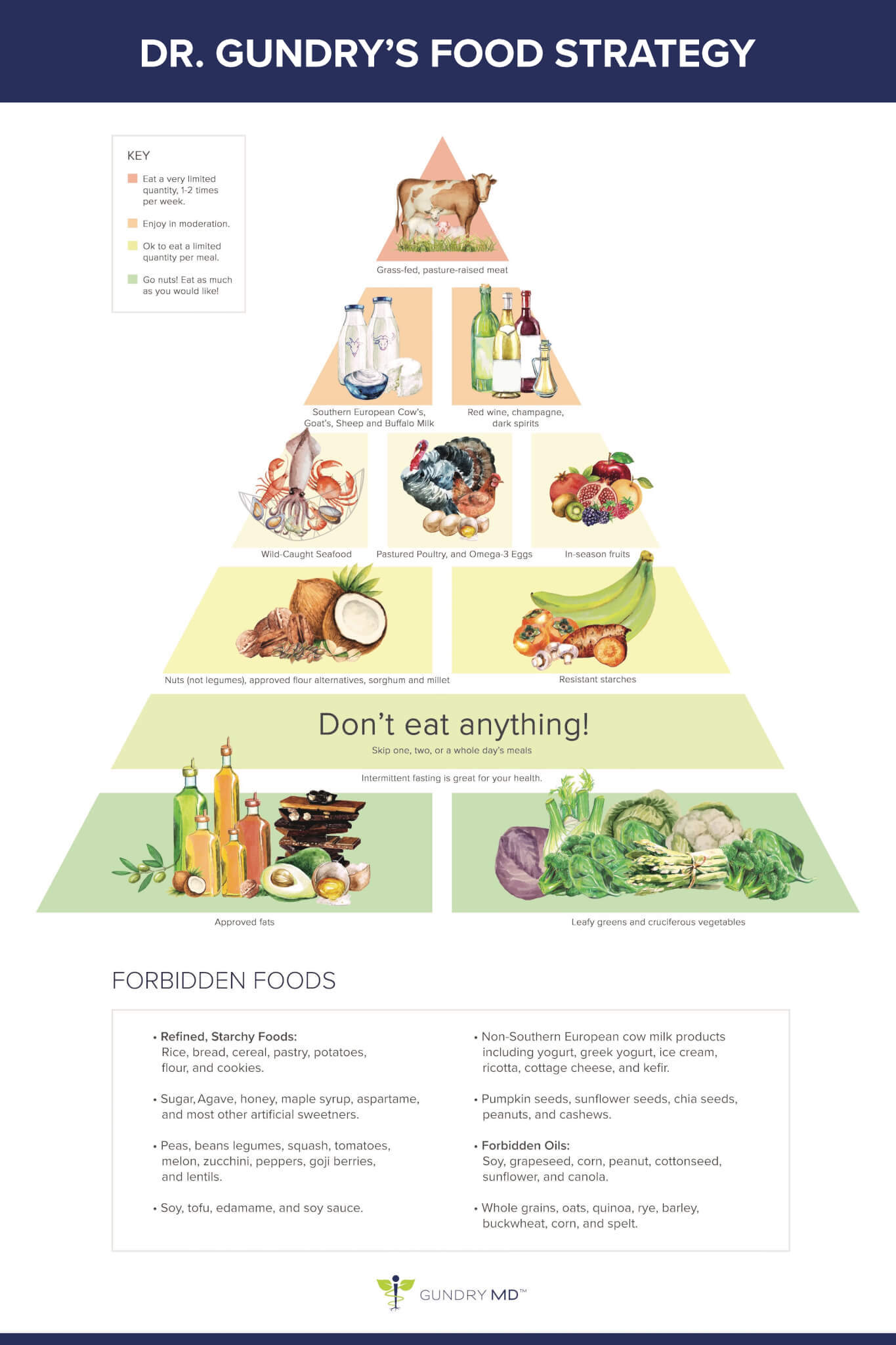
(11) Eat fermented foods
This ancient way of preparing and preserving food is generally recognized as a healthy practice. There is no doubt that they need to be part of your diet. Your gut needs fermented foods to feed those good gut bugs that keep us alive and healthy. Make eating fermented foods a daily habit.

(12) Balance feeding with fasting
This is not an invitation to starve yourself, but if you follow all the above steps, you will see you won’t feel “hangry” anymore, and you can eat the good foods that your gut loves until you feel full and without counting calories. It has already been proved that intermittent fasting has great benefits for your health.
You will attain what I like to call “food freedom” – you will want to feed your body with nutrient-dense food without feeling ‘hangry’ and cravings. You will end up eating at the same table with people having burgers, fries, and tiramisu, and you will feel indifferent about it. However, you will certainly start craving broccoli, cabbage, eggs, avocado, dark chocolate, nuts, and all kind of foods that your gut bacteria need to be healthy and happy.
I practice intermittent fasting for about 16 hours every day by having my last meal at around 7 pm and my next meal at around noon the next day. In the beginning, it was an effort, but now I simply don’t need food in the morning.
Practice intermittent fasting
“The longer you go between meals, the more metabolic flexibility you develop in your mitochondria, the tiny power stations in your cells, especially in the neurons of your brain.” (Dr. Steven Gundry)
“Indeed, fasting is the most time-honored and widespread healing tradition in the world. It has been practiced by virtually every culture and every religion on Earth. […] The practice of fasting developed independently among different religions and cultures, not as something that was harmful but as something that was deeply, intrinsically beneficial to the human body and spirit. fasting is not so much a treatment for illness but a treatment for wellness.”
“Starvation mode is the mysterious bogeyman always raised to scare us away from missing even a single meal. Why is it so bad to skip a meal? […] Assuming we eat three meals a day, over one year, that’s a little one a thousand meals. To think that fasting for one day, skipping three meals of the one thousand, will somehow cause irreparable harm is simply absurd. ” – The Complete Guide to Fasting, by Dr. Jason Fung
Five-day fasting mimicking diet meal plan
Check out this Lectin-Light Five Day Fasting Mimicking Diet Meal Plan, a plan that is more in line with Phase 3 of the Plant Paradox and The Longevity Paradox (no animal protein and includes pressure cooked beans).

(13) Supplement
We are all different and have specific needs, and ideally, we need to have all the necessary tests to understand what our bodies lack and need. But, there are a few general supplements that everyone can take: DHA and EPA (the good quality fish oil or krill oil), magnesium and potassium, Vitamin D3 and K2, a mix of polyphenols, and basic vitamins and minerals like biotin and selenium, pro- and pre-biotics.
I’m not saying start taking after reading this, but do research, see a functional medicine practitioner, take some tests, and decide for yourself. In an ideal world, we wouldn’t need supplementation. But our agricultural practices have depleted soils of nutrients, and we live so disconnected from nature that it’s hard to get all the necessary nutrients naturally.
(14) Use quality iodized salt in your cooking
Or better said, don’t be afraid of salt, as you’ve been told for so many years. You would be surprised to know that even good brands of iodized sea salt contain dextrose. So I decided to stick with Himalayan pink salt, which is naturally rich in minerals and iodine. For more quality salt options, check my SHOP and click on Spices.
(15) Re-learn the pleasure and art of cooking
This is at (almost) the end as a way of saying that it is hard, if not impossible, to achieve all the above steps without cooking at home. And to make this a sustainable lifestyle, you have to enjoy cooking and preparing tasty food for you and your loved ones or together with them. You have to end up loving and appreciating the food you cook better than the food you would eat in a regular restaurant to want to stick to this lifestyle. Unless you can afford a private chef, that’s a different story.
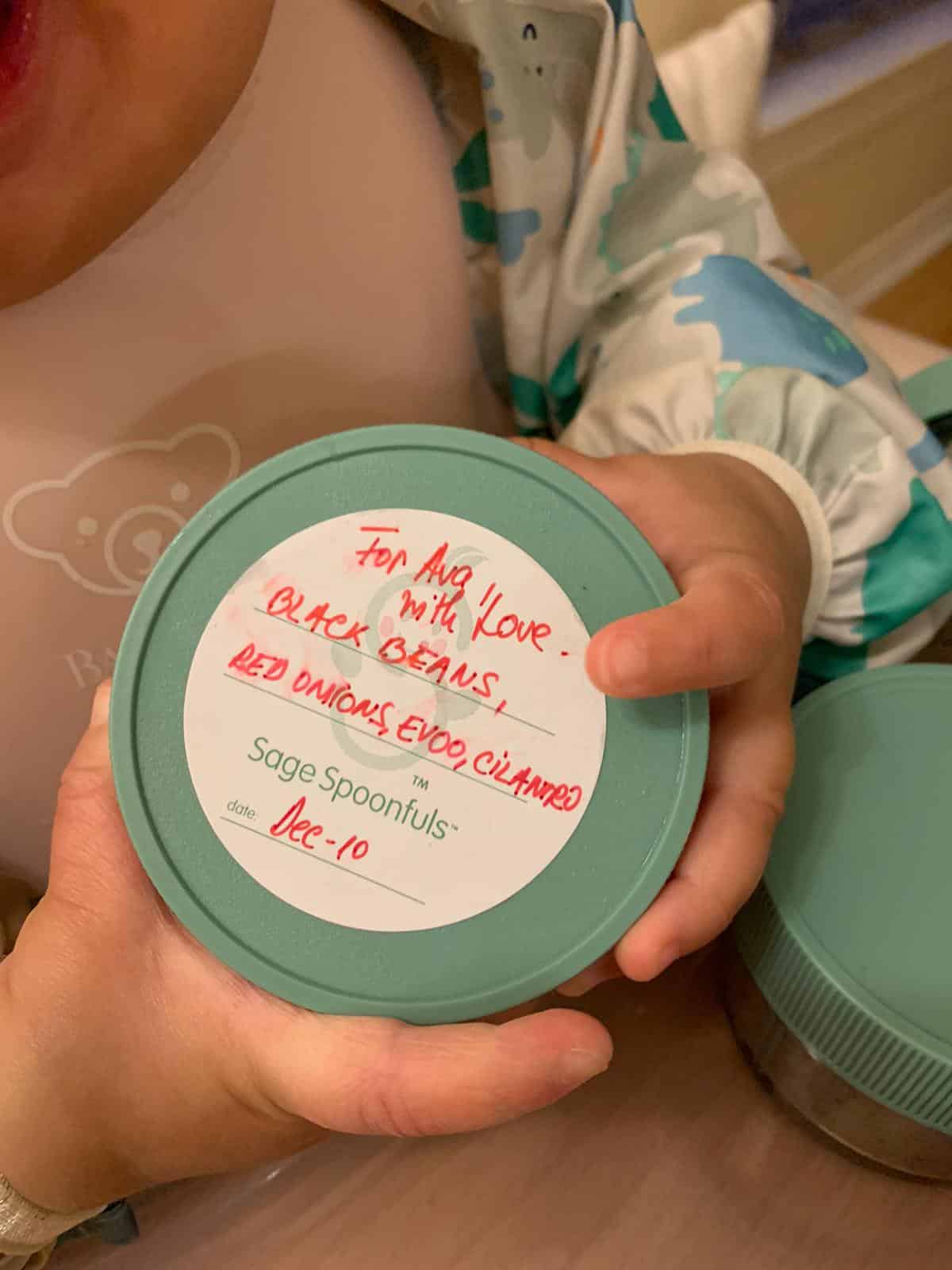
“It’s often said that obesity is genetic or that it runs in families. The things that really run in families are dietary and lifestyle habits, so it’s true that there is a familial aspect to it, but there doesn’t appear to be an obesity gene.“ – Superfuel (pg. 135), by Dr. James Dinicolantonio and Dr. Joseph Mercola
(16) Try to reduce your stress and have quality sleep
This is non-negotiable. Stress and poor quality sleep take a great toll on your body and mind. Chances are, these will improve when you change your diet. But you still have to assess your level of stress and the quality of your sleep and take measures to improve them if need be.
“Unfortunately, this region of the brain [e.n. the prefrontal cortex] and all its associated tasks [e.n. planning, decision making, expression of one’s personality, self-awareness] suffers when we are sleep deprived, according to research from the University of California, Berkeley. This can lead to a reduced ability to regulate our emotions. Why? The prefrontal cortex usually helps put emotional experiences into context so that we can respond appropriately, but it becomes dysfunctional with sleep loss, letting the primitive and fearful amygdala (the brain’s ‘fear center’) call the shots instead.” – Genius Foods (pg. 248), by Max Lugavere


(17) Assess and address the exposure to other “deadly disruptors”
They increase chronic inflammation: broad-spectrum antibiotics, non-steroidal anti-inflammatory drugs known as NSAIDs) such as ibuprofen, stomach acid blockers, artificial sweeteners such as sucralose and aspartame, endocrine disruptors found in household, skincare, and beauty products, air pollution, exposure to mold, arsenic in food, heavy metal exposure, plastic exposure; GMO foods, and Roundup herbicide; constant exposure to blue light.
(18) Keep your brain and body active
Practice moderate exercise or play games and sports that you love, always learn new things, and try to meditate. Choose something you enjoy doing and choose walking whenever possible.
Nitric Oxide Dump is one of my favorite way to exercise
***
I hope this helps you to easier navigate the world of healthy living and eating out there. If you have suggestions or questions, don’t hesitate to contact me. Or stay in touch and up to date with my latest food creations on my Instagram page, @CreativeInMyKitchen.
DISCLOSURE: This article is only for educational purposes and the information here is an overview of health theories outlined by health professionals in the above-mentioned resources and how I implemented them in my own journey. Remember, we are all different. For medical advice, consult with your doctor.
*This page contains affiliated links, which means I get a small commission if you choose to purchase something via one of my links, at no extra cost to you.

16 Comments
Jo
May 9, 2021 at 2:01 amHello,
I have pancreatitis and I have to change my complete diet as well as boarder line cholesterol and I’ve been told to try the Plant paradox diet to help with the inflammation. My question is – would this be safe for me to try?
Claudia
May 10, 2021 at 12:49 amHi Jo, this is something you should discuss with your doctor. Plant Paradox is a whole food, real food diet, so from this perspective, it can’t do harm. But you will have to discuss with a professional and keep track of your bloodwork and other markers so you can see how it affects you personally. You might have to do some tweaks, but it is a great start. Wishing you all the best.
Stacey
February 25, 2021 at 12:19 amHi- I enjoy following your IG account and bookmark your recipes. I’ve been gluten and dairy free for many years with some major improvements, yet still persistent issues. Since the beginning of the year I’ve been having sinus issues so I’m revisiting the idea of going grain free. Seems I do this every year and then when looking into it more closely I balk at the idea. Your story is very inspiring but for me the main issue I have is how heavily this diet relies on coconut and avocado. I’m allergic to both so it seems way too limited for me. Any suggestions?
Claudia
February 25, 2021 at 3:16 amHi Stacey, thank you so much for your kind thoughts. I haven’t had avocado for two years, just reintroducing it now. In fact, after a histamine overload crisis I had to figure out a way to continue the plant paradox while having to eliminate half of the foods I was eating before, including avocado (you can ready my Histamine article for more details). You can live and eat well and do the plant paradox without avocado or coconut. I rarely use coconut flour (easily replaceable), just having fresh coconut every now and then and coconut milk can easily be replaced by hemp milk, which is super easy to make at home and easy to find in the US (the Pacific brand, Original, unsweetened). I hope you give it a try. On the way you might discover that some foods in the Yes list are not for you (like I did) but there is so much more variety out there. Take it as a challenge, like a personal project. Best wishes of health and many hugs, C.
Shirley Keyes
February 11, 2021 at 2:07 pmThank you for your open discussion about inflammation and how to curb it with healthy changes and lifestyle. I need to do this for my health and well being.
Maureen Baldwin
April 1, 2020 at 2:04 pmDr. Gundry,
Being a cardiologist, what do you recommend for A-Fib patients on Warfarin? We have such a limited diet for greens.
Claudia
April 1, 2020 at 4:06 pmHi Maureen, this is not Dr. Gundry’s website. Feel free to write him or his team, with your questions, on his social media channels.
Barry Prokopetz
September 11, 2019 at 11:58 amHi all: we started down this path about 4 years ago thru Sarah Ballentyne PhD, aka the Paleo Mom, the Paleo principle person, and sort of started on the Plant Paradox/ Dr Gundry diet. My (almost every joint) pain has mostky disappeared, plaque psoriasis has mostly cleared up.
YES, it’s not a “diet”, it is a lifestyle changed. I also dropped about 45 lbs and walk 6-10 km daily. Not bad for a 70 year old guy. Thanks all.